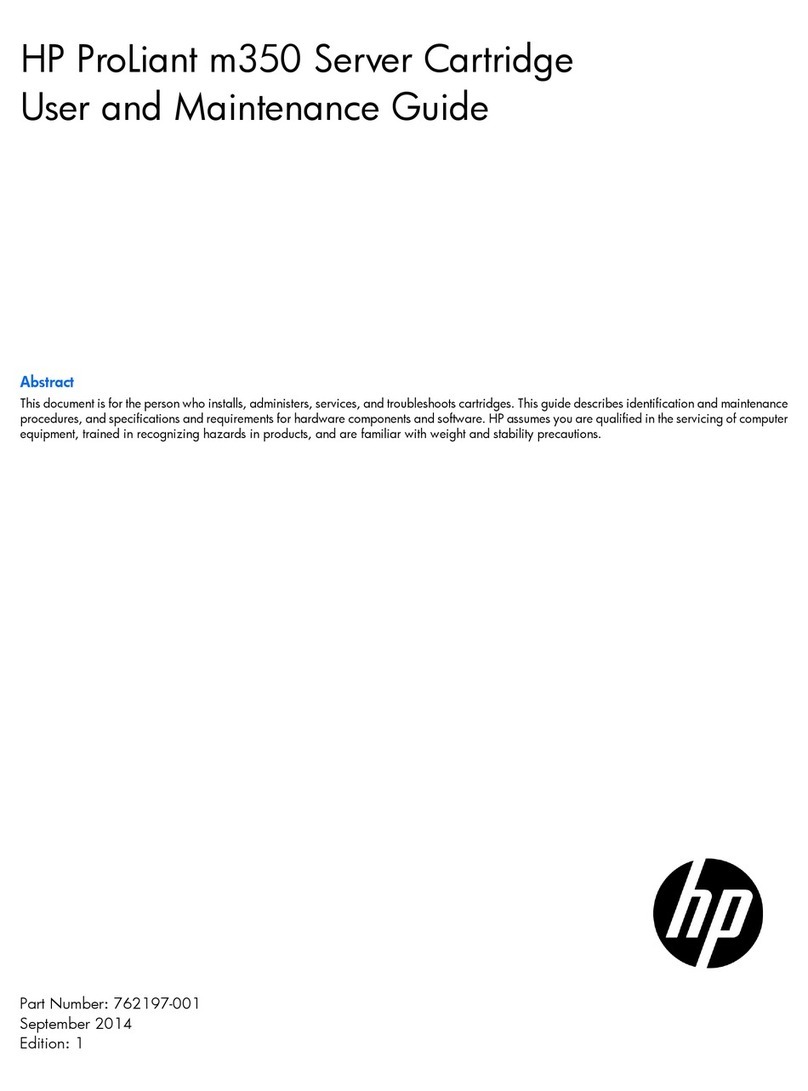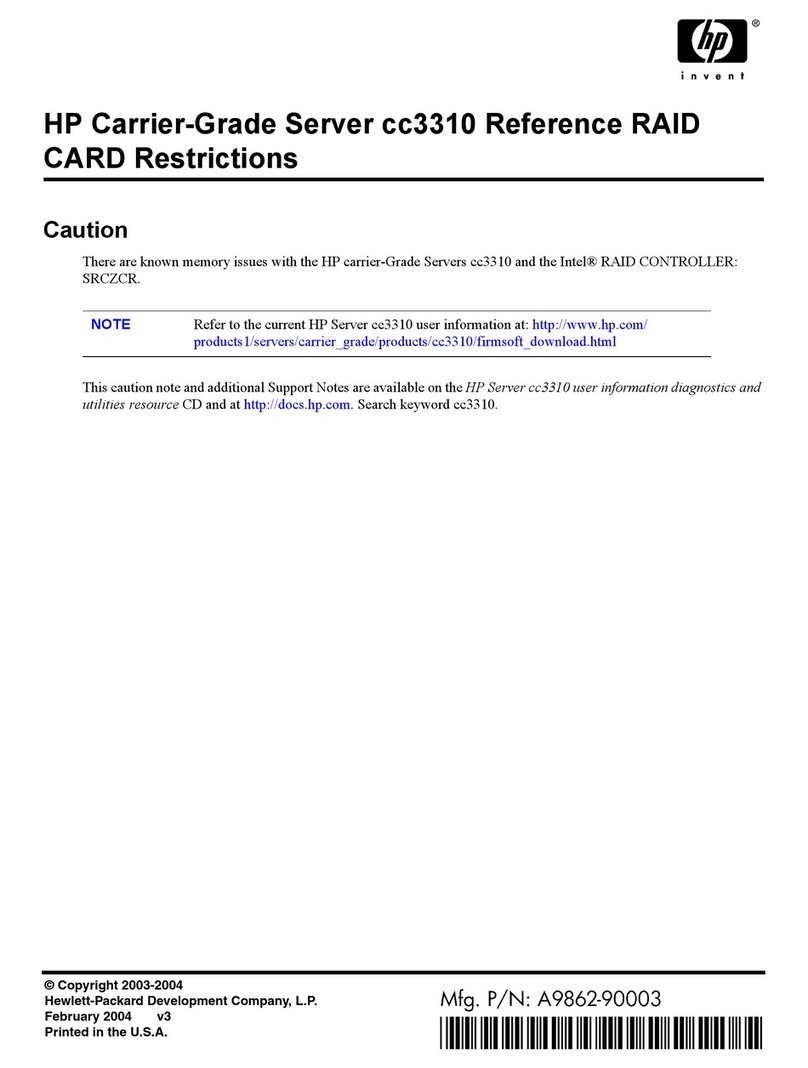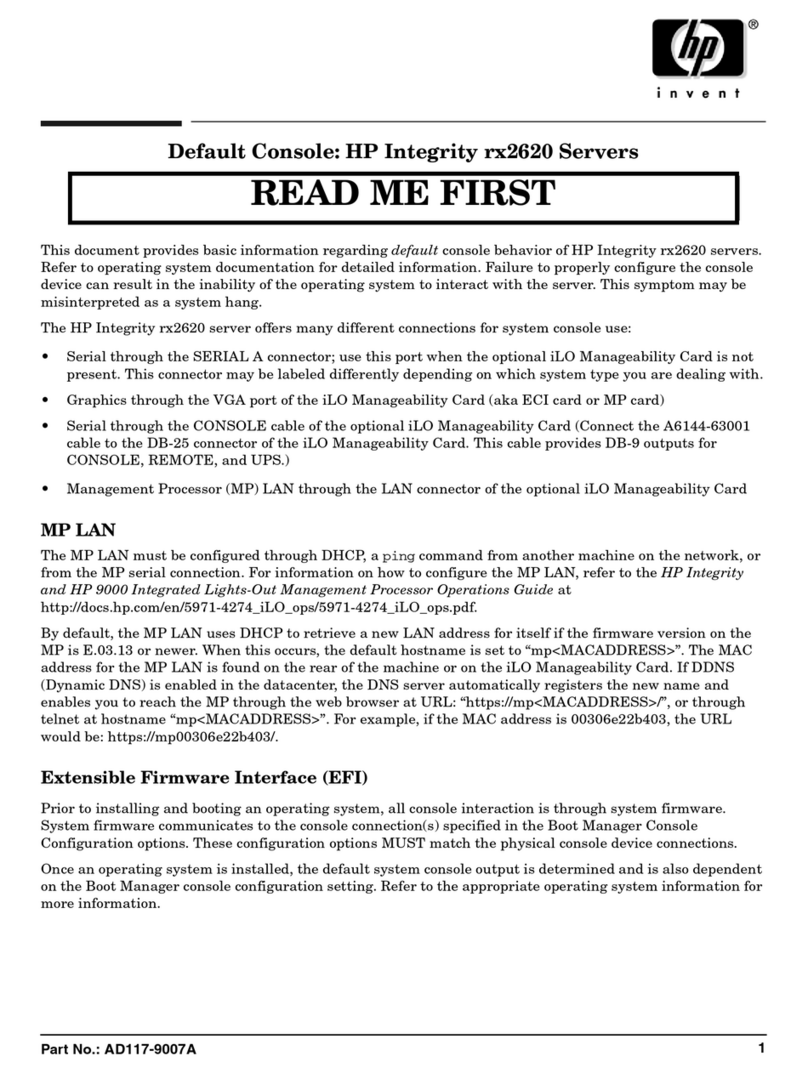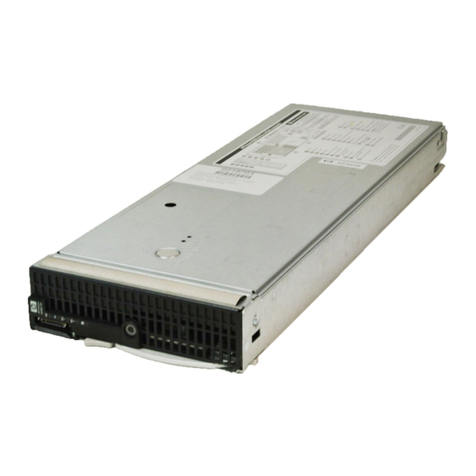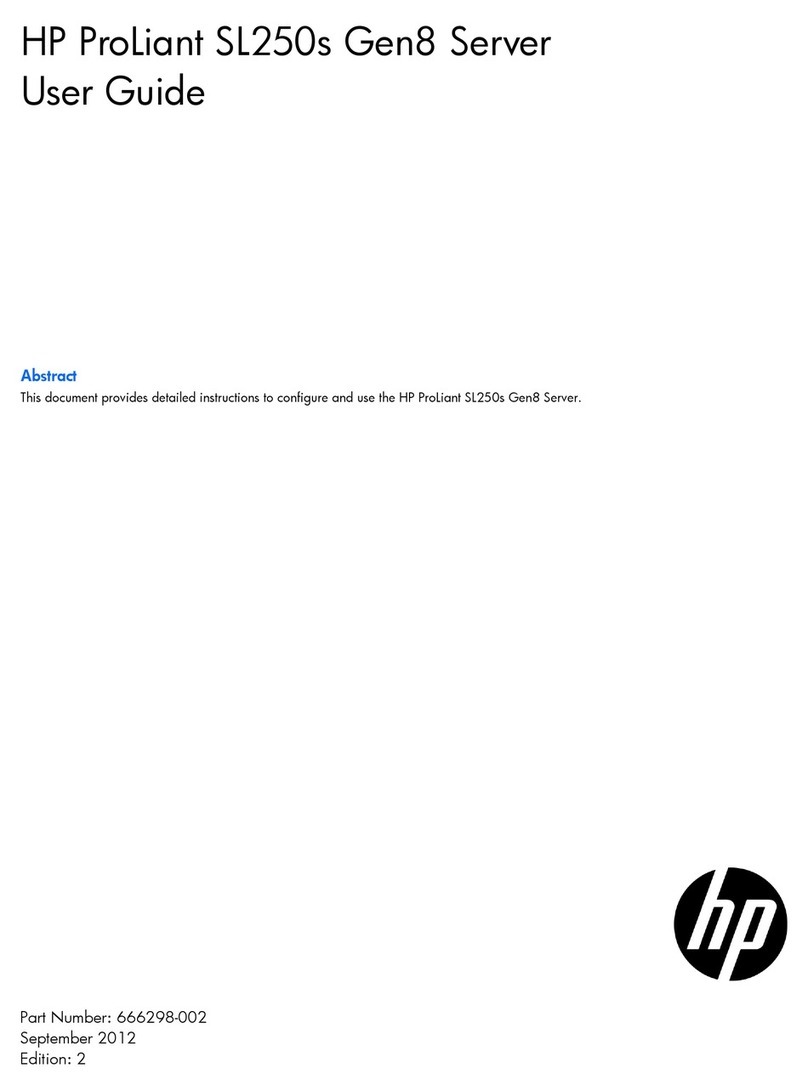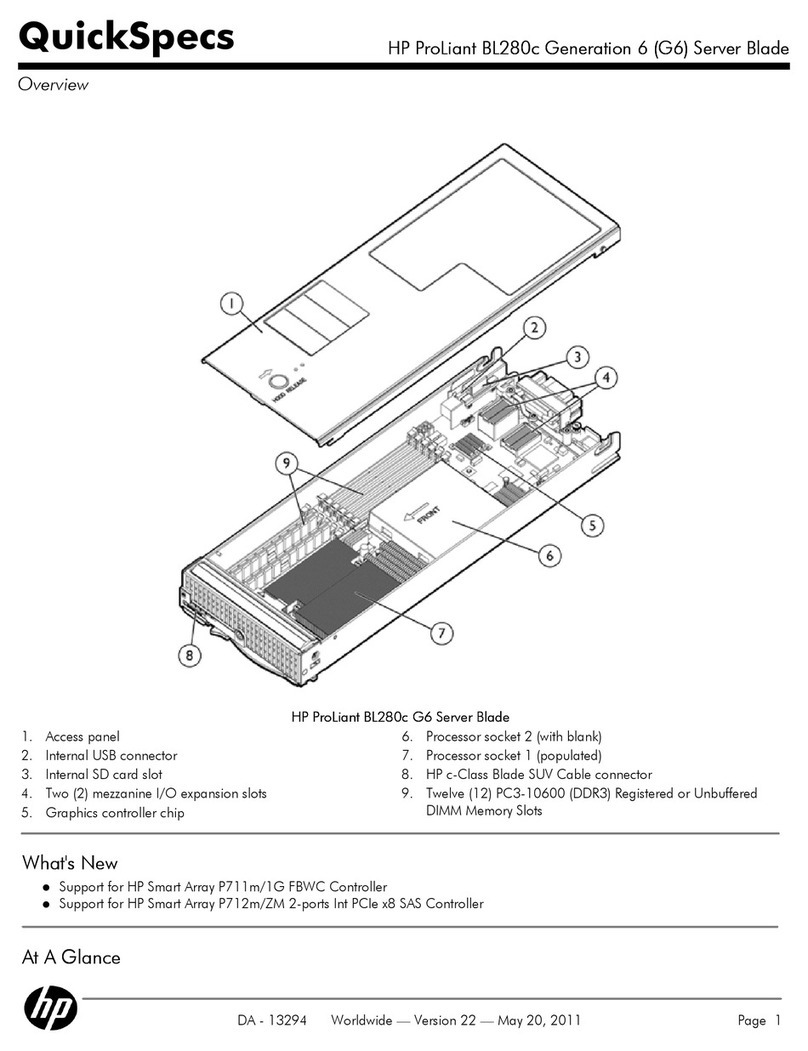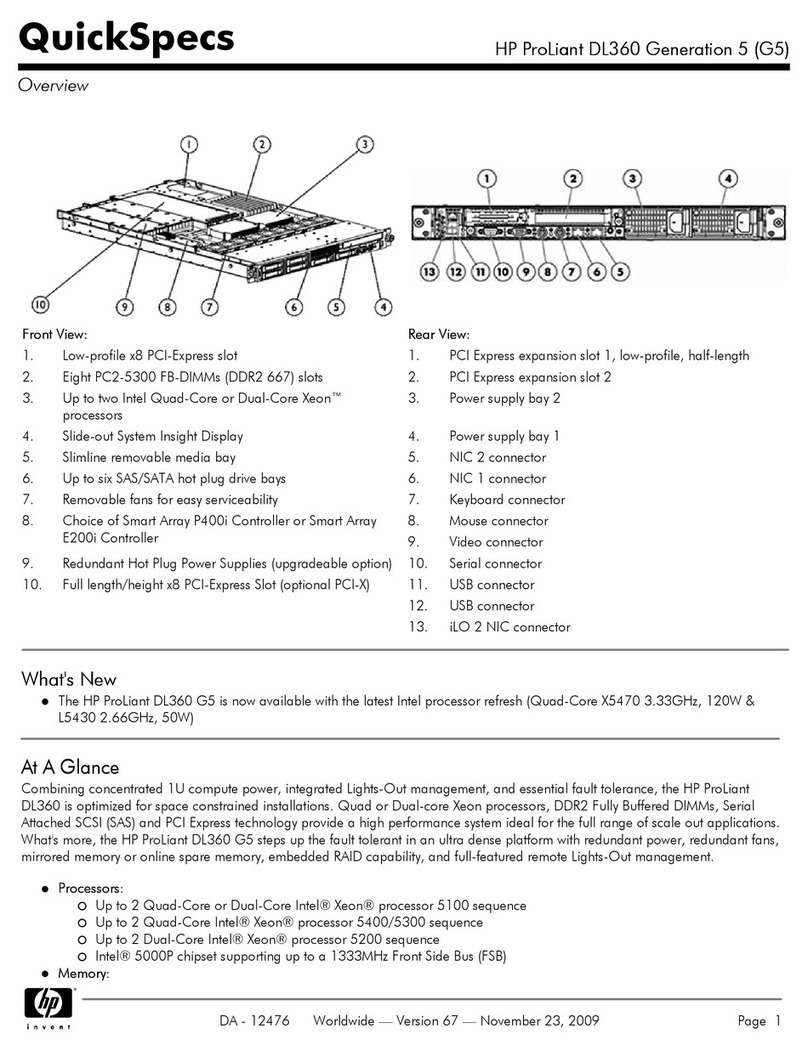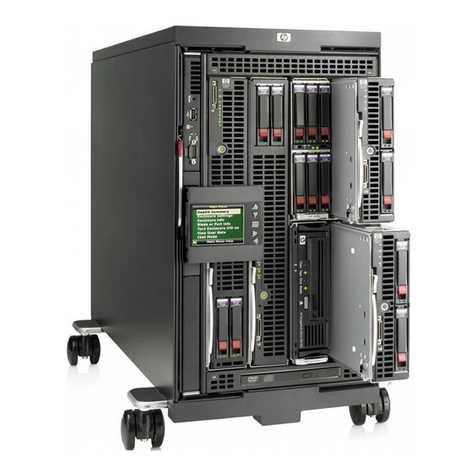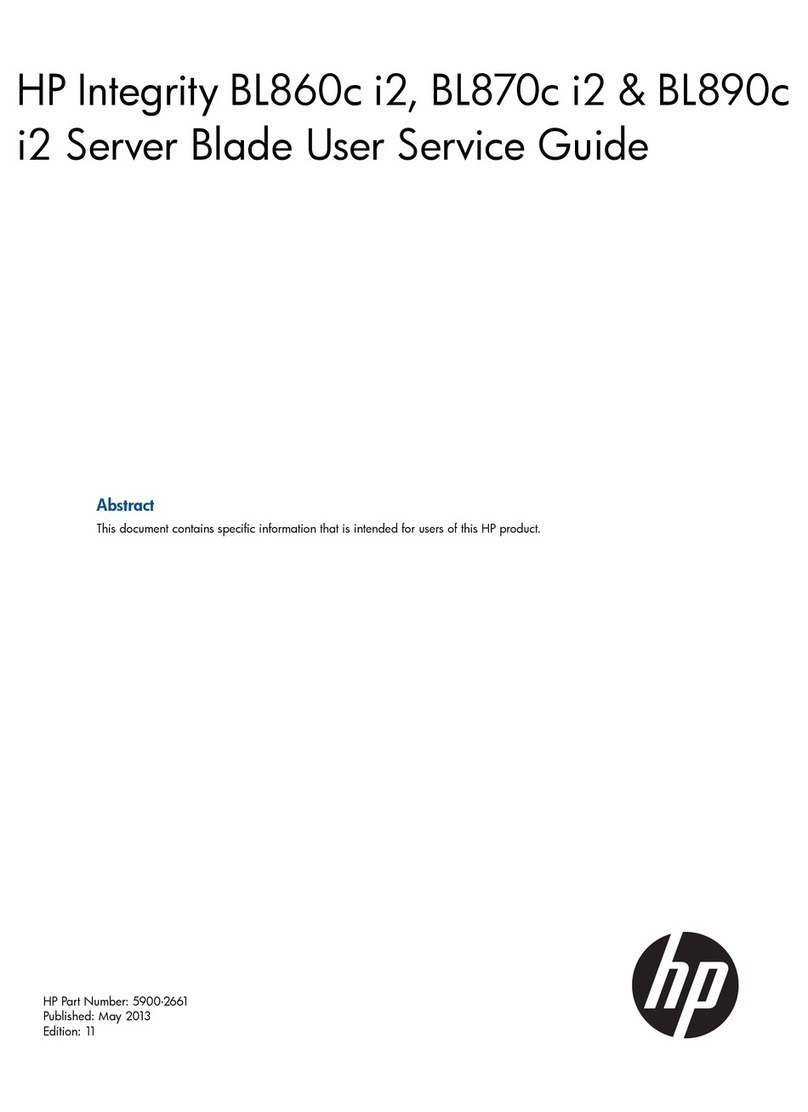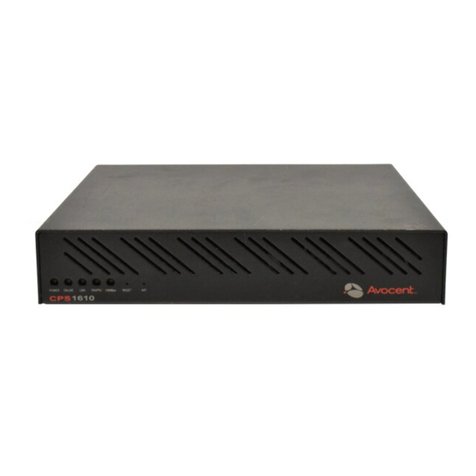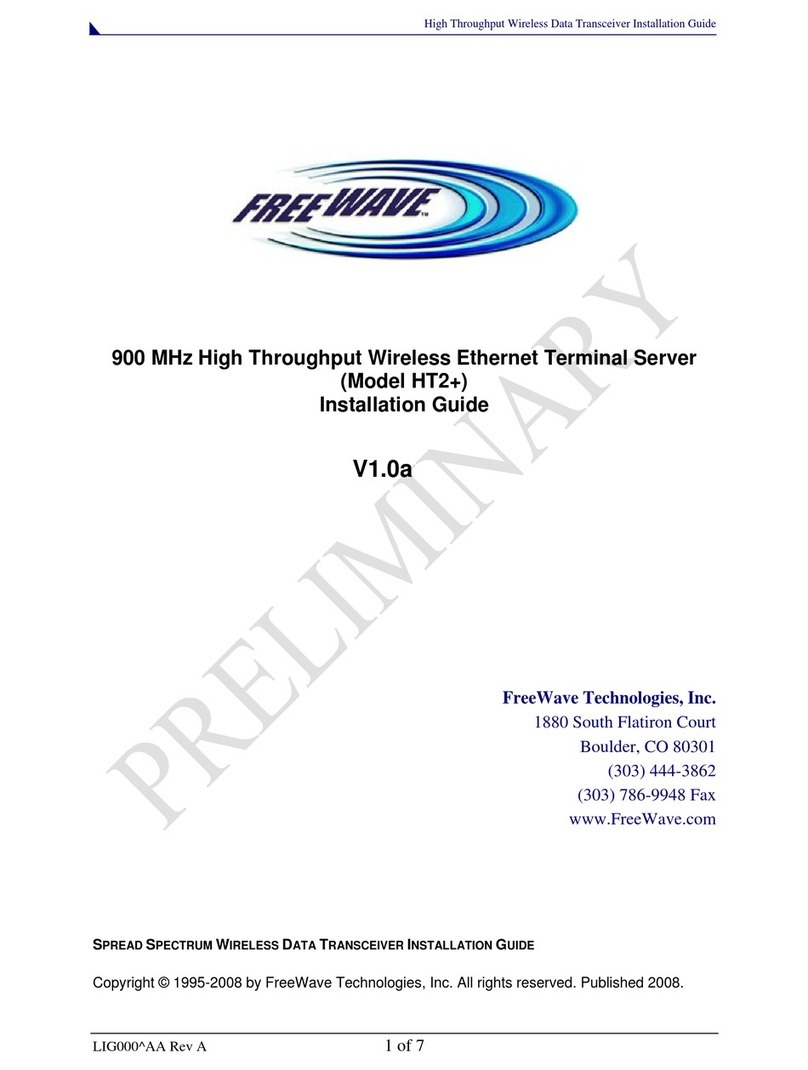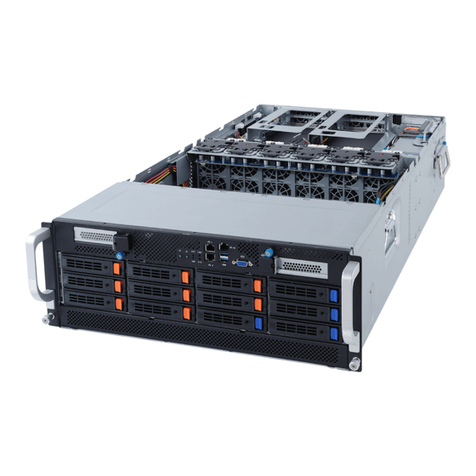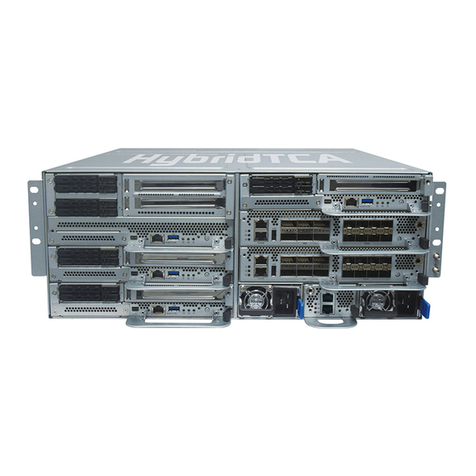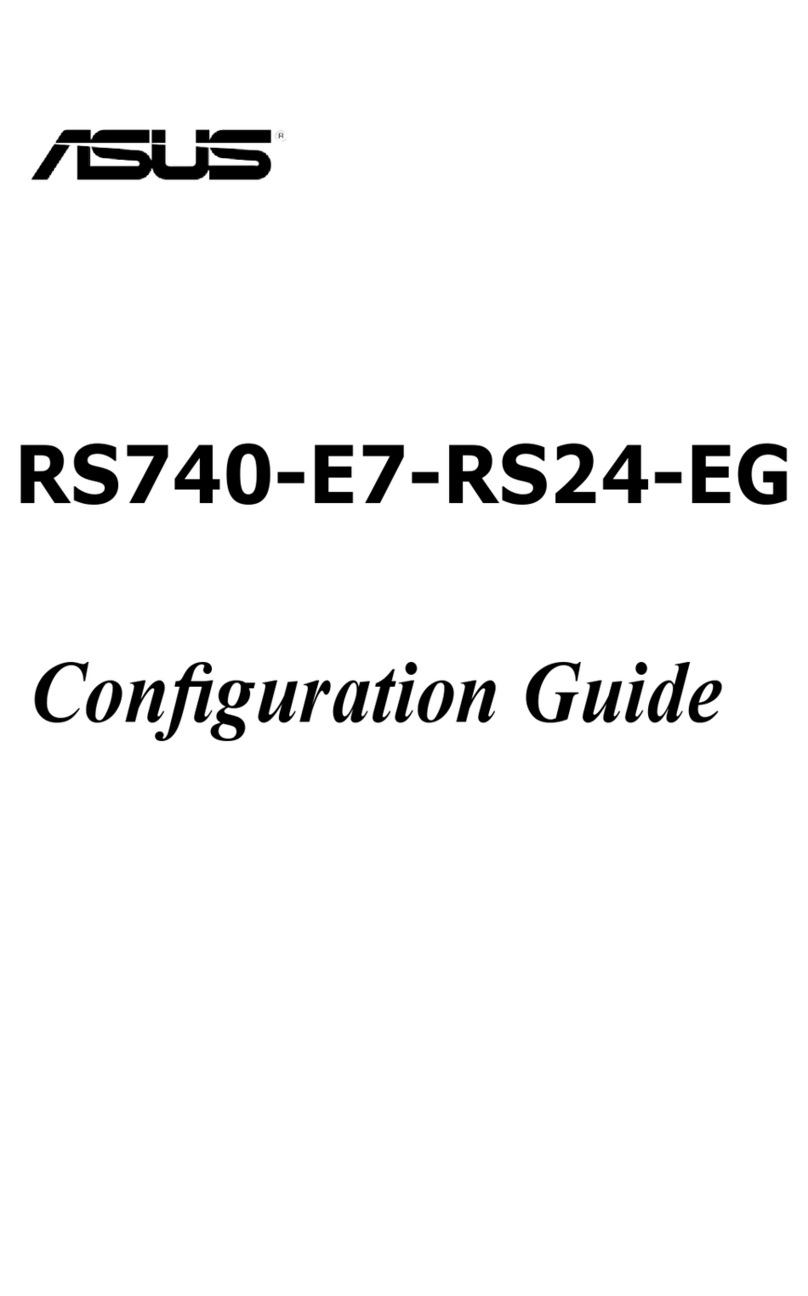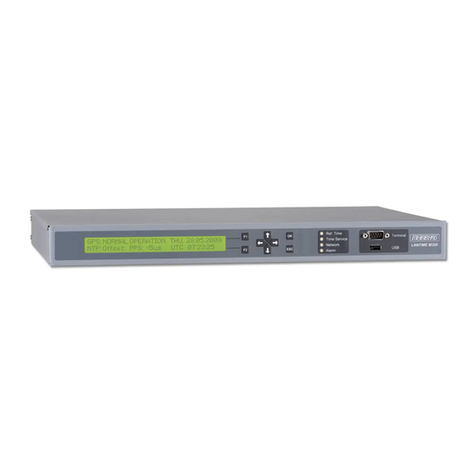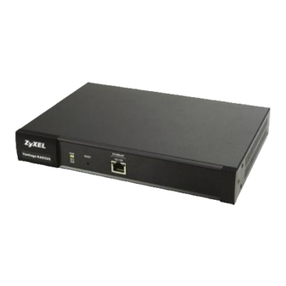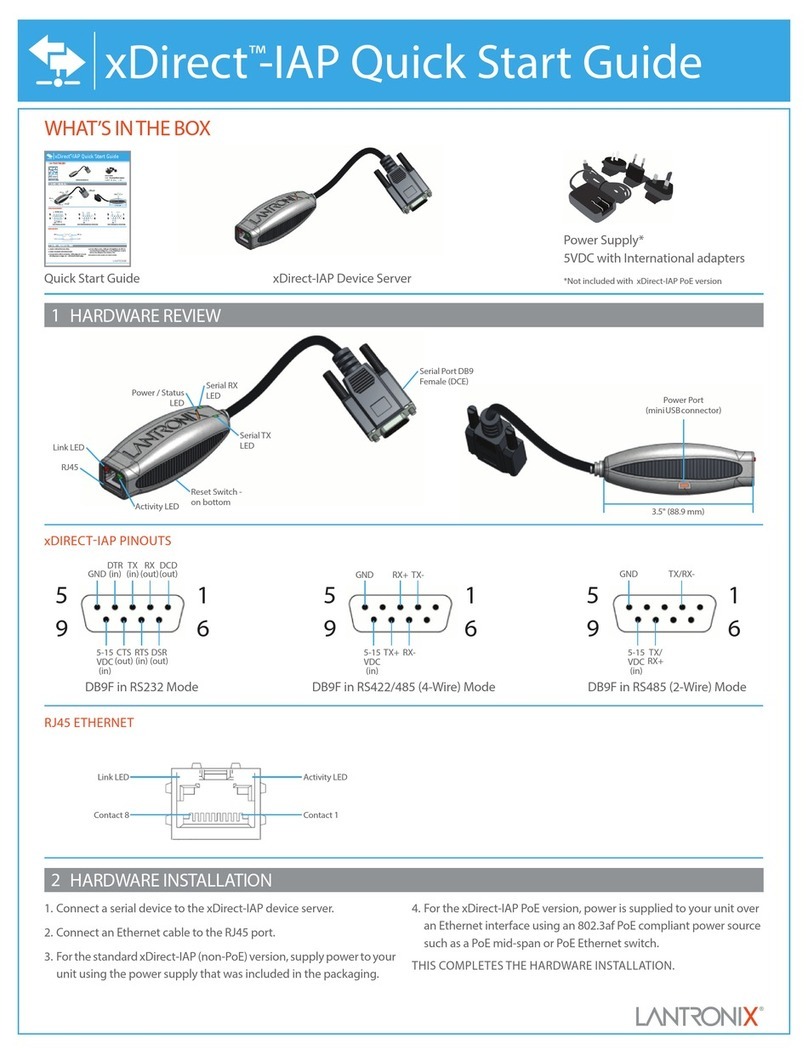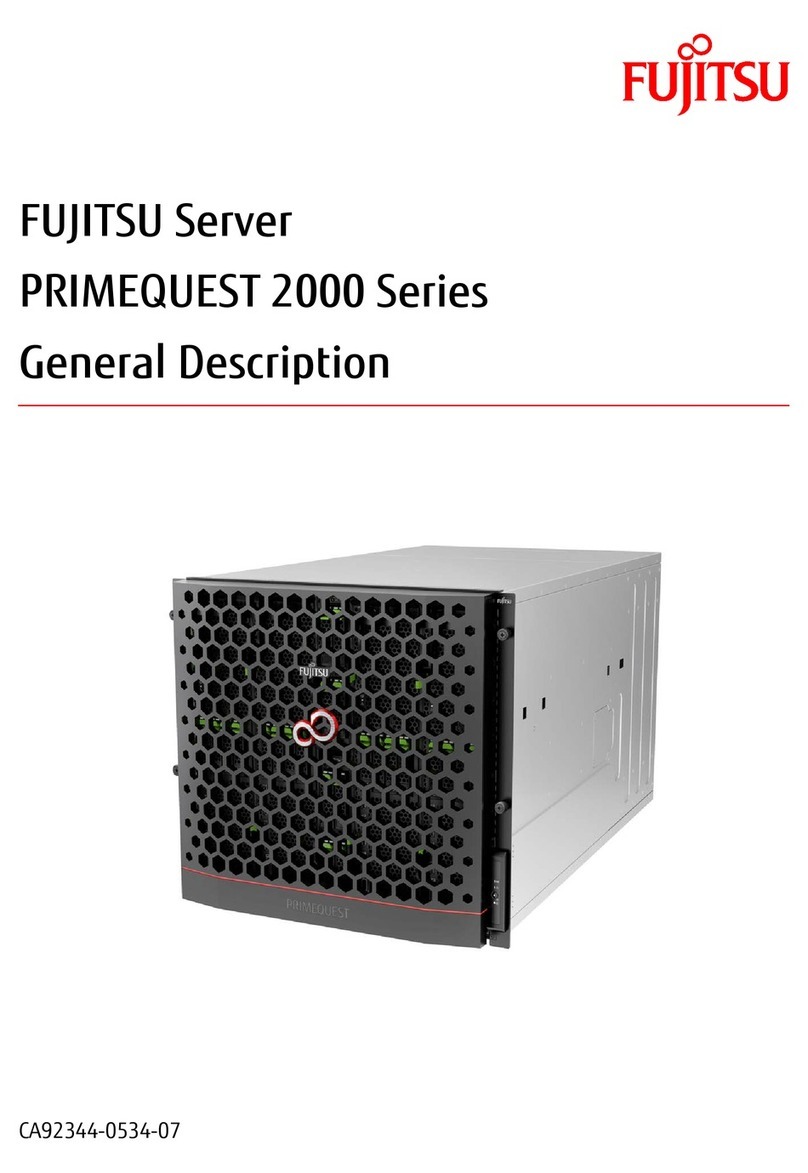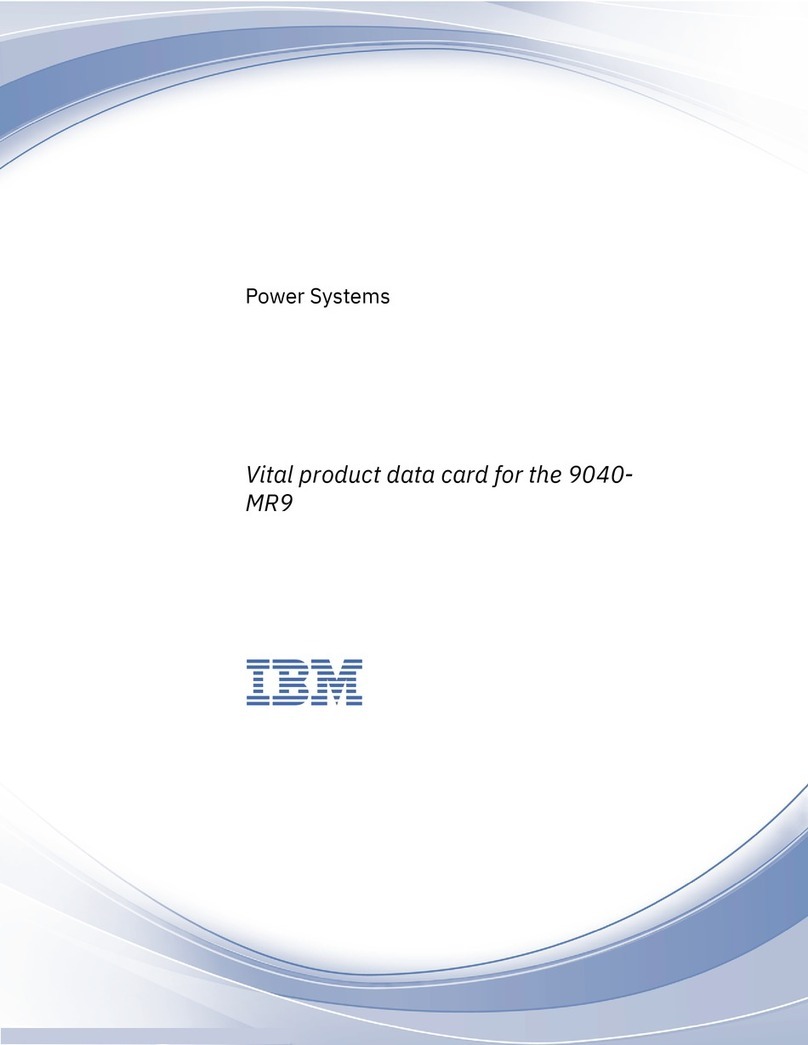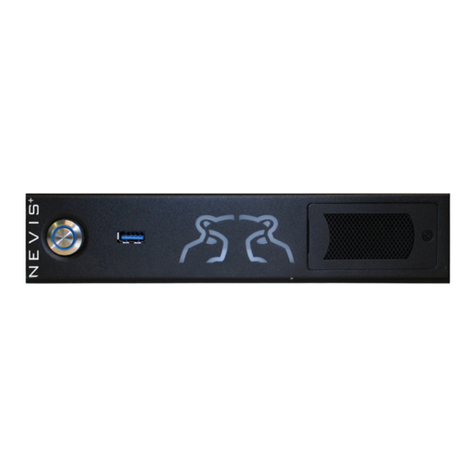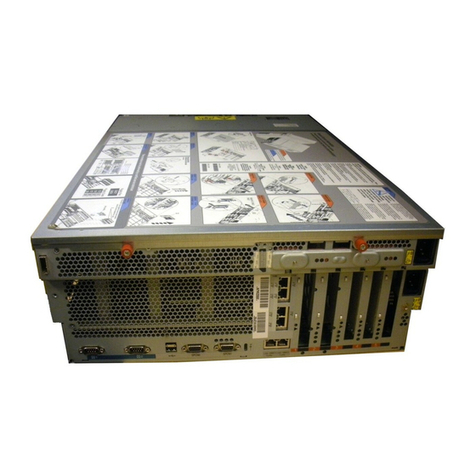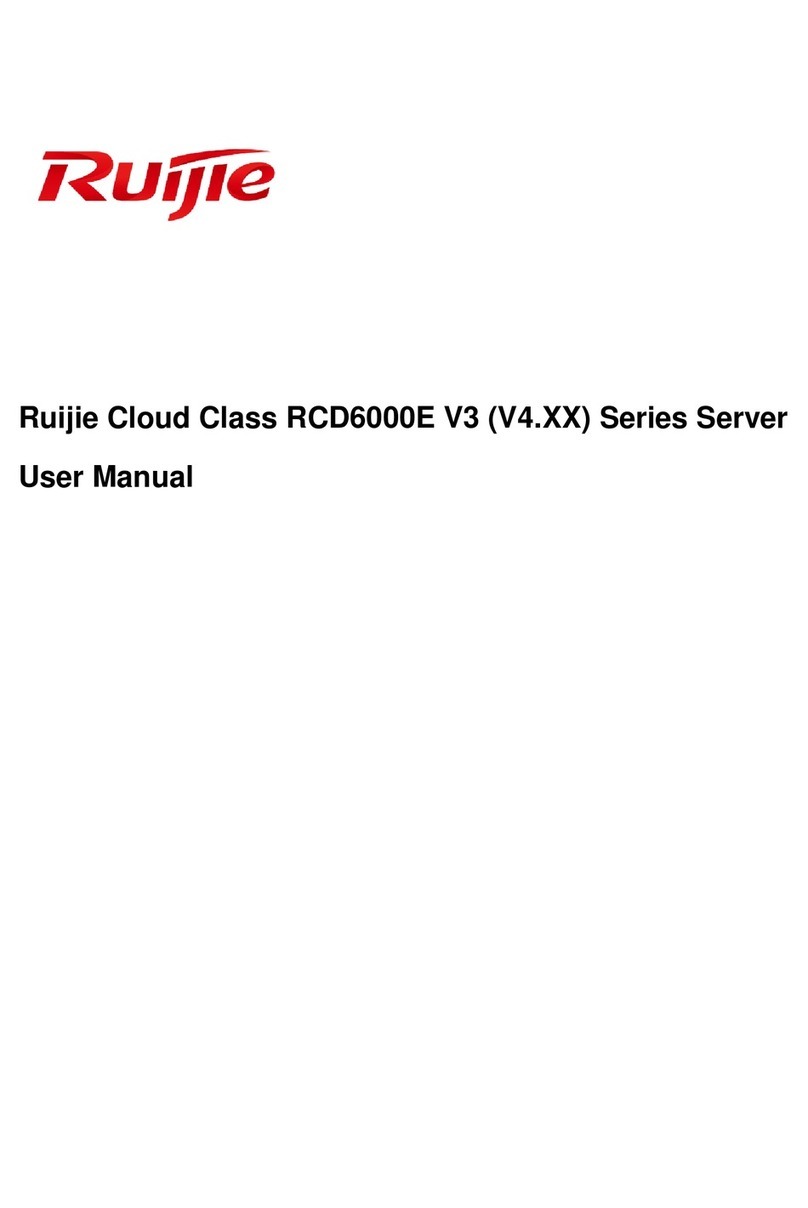
Standalone pedestal configuration
The rx2600 is also available in a standalone configuration when a cabinet is not desired. The standalone system
is ideal for an office environment, under a desk, or on a shelf. The standalone configuration uses a stylish tower
mounting shell, with the system simply placed inside this shell.
Note: Dimensions for standalone/pedestal configuration: H = 19.5 inches (49.5 cm), D = 26.5 inches (67.3 cm),
W = 11.7 inches (29.7 cm).
Workstation or server? Here’s how to choose
HP also sells the Itanium 2–based HP Workstation zx6000. This section describes the technical differences
between the HP Workstation zx6000 and the HP Integrity rx2600 server.
The HP Integrity rx2600 server and HP Workstation zx6000 are both 1- or 2-way Itanium 2–based systems. Both
utilize HP’s high-performance zx1 Chipset. Beyond that, however, the Integrity server is a very different class of
system.
The HP Integrity rx2600 is optimized for high-performance server I/O with four 133 MHz PCI-X slots, including
one full-bandwidth 1 GB/s slot. The HP Workstation zx6000 is optimized for high-performance AGP graphics
support. Moreover, the HP Integrity rx2600 includes many high-availability features that are critical in commercial
and many technical server environments; these high-availability features such as chip spare memory and high-
availability clustering support are unique to the HP Integrity rx2600. The rx2600 is the best choice for compute
node clusters and mission-critical commercial applications because of its advanced connectivity, remote
manageability, and superior availability.
The systems also support different versions of HP strategic operating systems. The HP Integrity rx2600 supports
the commercial and technical operating environments of HP-UX as well as Microsoft’s Windows Server 2003
operating system. The HP Workstation zx6000 supports the client and technical versions of HP-UX as well as
the Microsoft Windows XP client operating system. For Linux, the workstation and server support different
distributions, focused on either client or server computing. The following table summarizes the differences between
the HP Integrity rx2600 and HP Workstation zx6000.
Comparing the HP Workstation zx6000 with the HP Integrity rx2600
HP Workstation zx6000 HP Integrity rx2600 server
Category Optimized for high-performance AGP
graphics support for the 1- or 2-way technical
computing workstation markets
Optimized for high-performance PCI-X I/O for
the 2-way server and performance cluster
markets
Target usage model Computer-aided engineering, scientific
research, life sciences, digital content
creation rendering, mechanical CAD,
workstation software development, graphics
clusters
Computer-aided engineering clusters, scientific
research clusters, secure Web serving,
application serving, server software
development
Intel Itanium 2 processors One or two 1.3 GHz with 3 MB L3 on-chip
cache, or one or two 1.5 GHz with 6 MB L3
on-chip cache
One or two 1.3 GHz with 3 MB L3 on-chip
cache, or one or two 1.5 GHz with 6 MB L3
on-chip cache
Memory capacity 24 GB Installed in pairs of DIMMs 24 GB of chip spare memory
Installed in quads of DIMMs
System bus bandwidth 6.4 GB/s 6.4 GB/s
System memory bandwidth 8.5 GB/s 8.5 GB/s
Aggregate I/O bandwidth (at HP zx1 Chipset
channels)
4.0 GB/s 4.0 GB/s
I/O slots One AGP-4X (1 GB/s) 66 MHz
Three PCI-X (0.5 GB/s) 133 MHz
One PCI-X (1 GB/s) 133 MHz
Three PCI-X (0.5 GB/s) 133 MHz
Operating systems supported HP-UX client and technical versions
Microsoft Windows (client version)
64-bit Linux (workstation distributions)
HP-UX 11i v 2 (commercial and techincal
versions)
Microsoft Windows Server 2003, Enterprise
Edition
64-bit Linux
Graphics support 3D and 2D AGP 2D via integrated VGA port
Audio support Yes—optional PCI card Not available
Internal storage Three 3.5-in bays for hot-plug Ultra320 SCSI
devices
Three 3.5-in bays for hot-plug Ultra320 SCSI
devices
Management processor card Optional Standard
(continued
7
